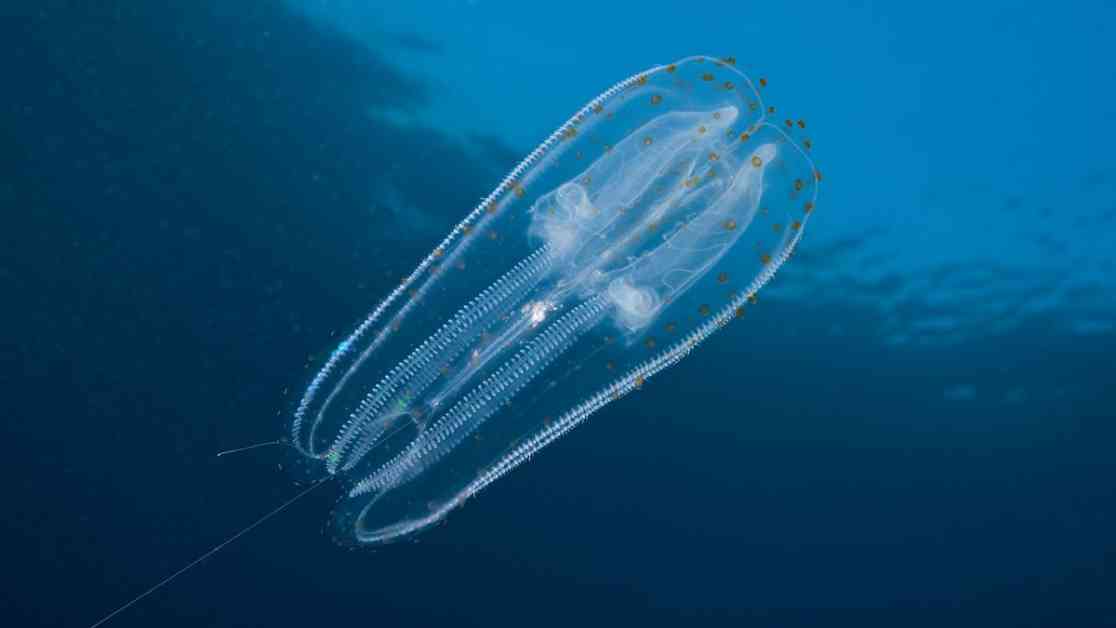The Earliest Known Animal Species in Earth’s History
A modern comb jelly. Contrary to what their name suggests, these organisms are not jellyfish, and research suggests they might be the first animal to have existed.
(Image credit: Reinhard Dirscherl via Getty Images)
Animals have roamed the Earth for millions of years, evolving into a diverse array of shapes and sizes. From tiny tardigrades to massive blue whales, the animal kingdom is full of fascinating creatures. But what was the very first animal to inhabit our planet? The answer to this question has sparked intense debate among scientists, with two main contenders emerging: sponges and comb jellies.
The Cambrian Explosion and the Rise of Animal Life
The Cambrian period, which began approximately 541 million years ago, marked a significant moment in Earth’s history. It was during this time that the planet experienced a rapid diversification of animal species known as the Cambrian Explosion. In just 10 million years, hundreds of thousands of new animal species emerged, laying the foundation for the diverse array of life forms we see today. This explosion of biodiversity gave rise to early arthropods, mollusks, and chordates, the ancestors of vertebrates.
One of the key sources of information about early animals comes from fossils found in the Burgess Shale in British Columbia. These exquisitely preserved specimens offer a glimpse into the appearance of ancient creatures that lived during the Cambrian Explosion. Trilobites, one of the many animals that evolved during this period, are among the most well-known examples of early marine life.
The Enigmatic Ediacaran Period
Prior to the Cambrian Explosion, the Ediacaran period, which spanned from around 635 million years ago to the start of the Cambrian, was a time of mysterious soft-bodied organisms. Unlike the hard exoskeletons found in Cambrian fossils, Ediacaran animals were mostly blob-shaped and lacked the structural complexity of later species. Fossils from this period, such as the iconic Dickinsonia, provide valuable insights into the early evolution of animal life on Earth.
The Quest for the Earliest Animals
While the Cambrian and Ediacaran periods offer tantalizing glimpses into early animal life, the search for the very first animals remains a challenging endeavor. Paleobiologists like Elizabeth Turner have proposed groundbreaking hypotheses, such as the discovery of an 890 million-year-old sponge fossil. However, the debate over the true identity of the earliest animal continues to rage on.
Recent advancements in molecular clock analysis have shed new light on the origins of animal life. By examining the genetic makeup of modern organisms, scientists can trace their evolutionary history back to their earliest ancestors. A 2023 study focusing on comb jellies, also known as ctenophores, suggests that these creatures may be the earliest known animals, emerging around 600 to 700 million years ago.
The Controversy Surrounding Early Animal Origins
Despite the intriguing findings from molecular clock studies, paleogeobiologists like Nick Butterfield remain skeptical about declaring comb jellies as the first animals. Butterfield points to the absence of biomineralization in early fossils as evidence that more research is needed to confirm the identity of the earliest animals. Additionally, conflicting results from genetic studies have cast doubt on the validity of molecular clock data in determining ancient evolutionary timelines.
The Complex Evolution of Animal Life
While the debate over the earliest animals rages on, one thing remains clear: the evolution of animal life is a complex and dynamic process. From simple filter feeders like sponges to complex organisms like modern comb jellies, the journey from single-celled organisms to multicellular animals is a testament to the power of evolution. As scientists continue to unravel the mysteries of Earth’s ancient past, the true identity of the first animal species may soon be revealed.
In Conclusion
The quest to uncover the earliest known animal species in Earth’s history is an ongoing scientific endeavor filled with intrigue and debate. While sponges and comb jellies remain the primary contenders for this title, new research methods and discoveries continue to reshape our understanding of ancient life on our planet. As paleobiologists and geneticists collaborate to unravel the mysteries of early animal evolution, one thing is certain: the story of life on Earth is a complex and fascinating tale that continues to captivate scientists and enthusiasts alike.


